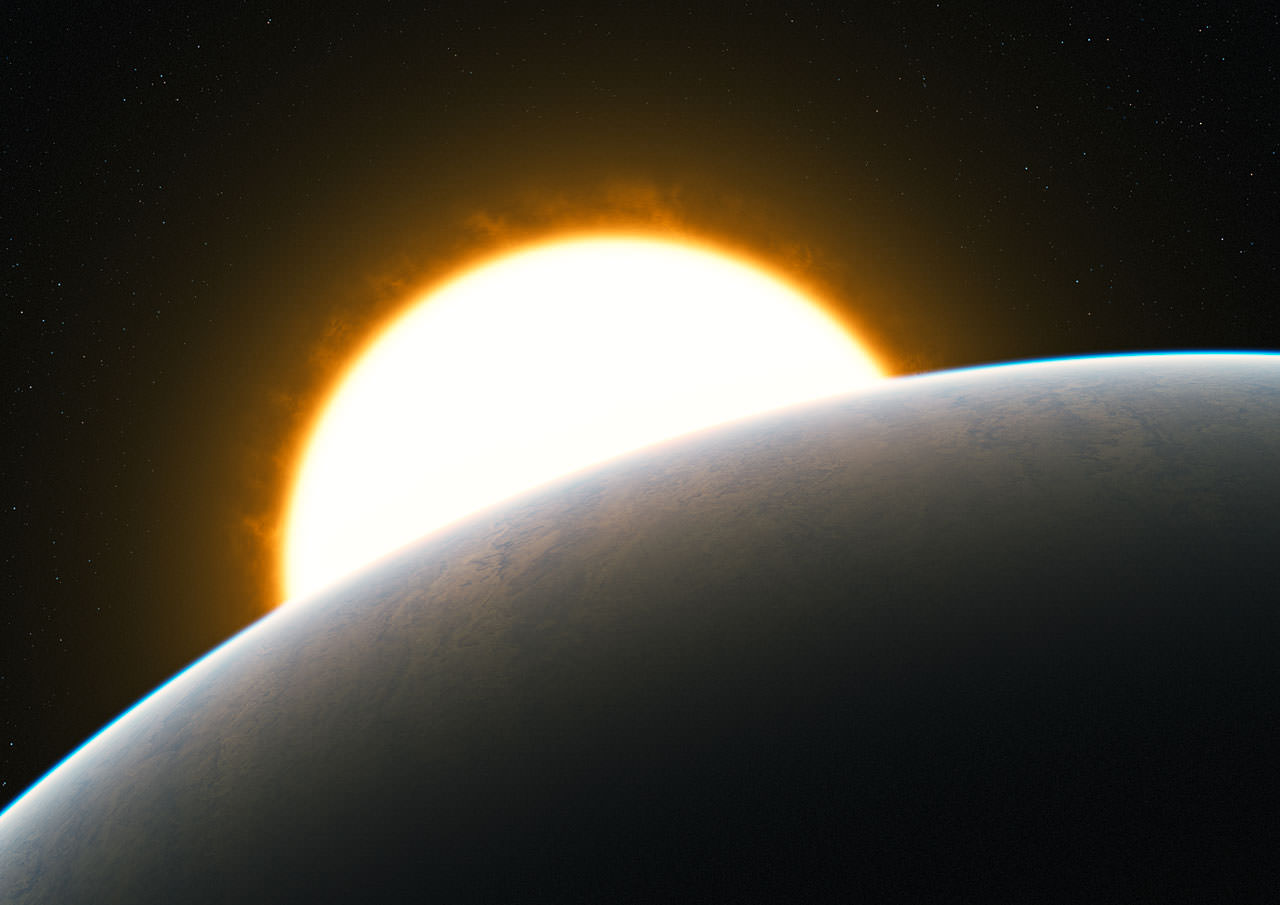[/caption]
With the success of the Kepler mission, the viability of looking for planets via transits has reached maturity. However, Kepler is not the first intensive study. Previously, other observatories have employed transit searches. To increase the chances of discovery, studies often concentrated on large clusters in which thousands of stars could be observed simultaneously. Based on the percentage of stars with super Jovian planets in the Sun’s vicinity, a Hubble observation run on the globular cluster 47 Tuc expected to find roughly 17 “hot Jupiters”. Yet not a single one was found. Follow-up studies on other regions of 47 Tuc, published in 2005, also reported a similar lack of signals.
Could the subtle effect of tidal forces have caused the planets to be consumed by their parent stars?
Within our solar system, the effects of tidal influences are more subtle than planetary destruction. But on stars with massive planets in tight orbits, the effects can be very different. As a planet would orbit its parent star, its gravitational pull would pull the star’s photosphere towards it. In a frictionless environment, the raised bulge would remain directly under the planet. Since the real world has real friction, the bulge will be displaced.
If the star rotates slower than the planet orbits (a likely scenario for close in planets since stars slow themselves via magnetic breaking during formation), the bulge will trail behind the planet since the pull has to compete against the photospheric material through which its pulling. This is the same effect that happens between the Earth-Moon system and is why we don’t have tides whenever the moon is overhead, but rather, the tides occur some time later. This lagging bulge creates a component of the gravitational force opposed to the direction of motion of the planet, slowing it down. As time goes on, the planet gets dragged closer to the star by this torque which increases the gravitational force and accelerating the process until the planet eventually enters the star’s photosphere.
Since transit discoveries rely on the planets orbital plane being exactly in line with its parent star and our planet, this favors planets in a very tight orbit since planets further out are more likely to pass above or below their parent star when viewed from Earth. The result of this is that planets that could potentially be discovered by this method are especially prone to this tidal slowing and destruction. This effect with the combination of the old age of 47 Tuc, may explain the dearth of discoveries.
Using a Monte-Carlo simulation, a recent paper explores this possibility and finds that, with the tidal effects, the non-detection in 47 Tuc is completely accounted for without the need to include additional reasons (such as metal deficiency in the cluster). However, to go beyond simply explaining a null result, the team made several predictions that would serve to confirm the destruction of such planets. If a planet were wholly consumed, the heavier elements should be present in the atmospheres of their parent star and thus be detectable via their spectra in contrast with the overall chemical composition of the cluster. Planets that were tidally stripped of atmospheres by filling their Roche Lobes could still be detected as an excess of rocky, super Earths.
Another test could inolve comparison between several of the open clusters visible in the Kepler study. Should astronomers find a decrease in the probability of finding hot Jupiters corresponding with a decrease with cluster age, this would also confirm the hypothesis. Since several such clusters exist within the area planned for the Kepler survey, this option is the most readily accessible. Ultimately, this result make sit clear that, should astronomers rely on methods that are best suited for short period planets, they may need to expand their observation window sufficiently since planets with a sufficiently short period may be prone to being consumed.


The only way to prevent this sort of tidal decay is if the orbital frequency and the rotational frequency of the planet are equal. That is an unlikely initial condition, though a possible final state. If the planet rotates with the same periodicity or frequency as the orbit then it will become stable. The tial bulge on the star will attentuate the energy of the star’s rotation, but not influence the planetary orbit.
LC
According to this earlier paper, another potentially observable effect on the star would be an increase in its stellar spin rate, as a result of the planet’s orbital angular momentum being transferred to the star.
Addendum: Because main-sequence stars tend to spin down as they age, an anomalously high spin rate would be an indication that a recent accretion of a tidally destroyed planet had occurred.
Nice run of articles John (Jon?) and the comments they provoke (usually) help clarify the subject matter. Pleasure to read.
BTW: “stars slow themselves via magnetic breaking during formation” – should be ‘braking’ methinks.
Might be a good idea to check for excess gases and dust around old stars. If the planet fragmented before merging, then some material may be blown outwards by solar wind.